The incredible Lancia Sibilo
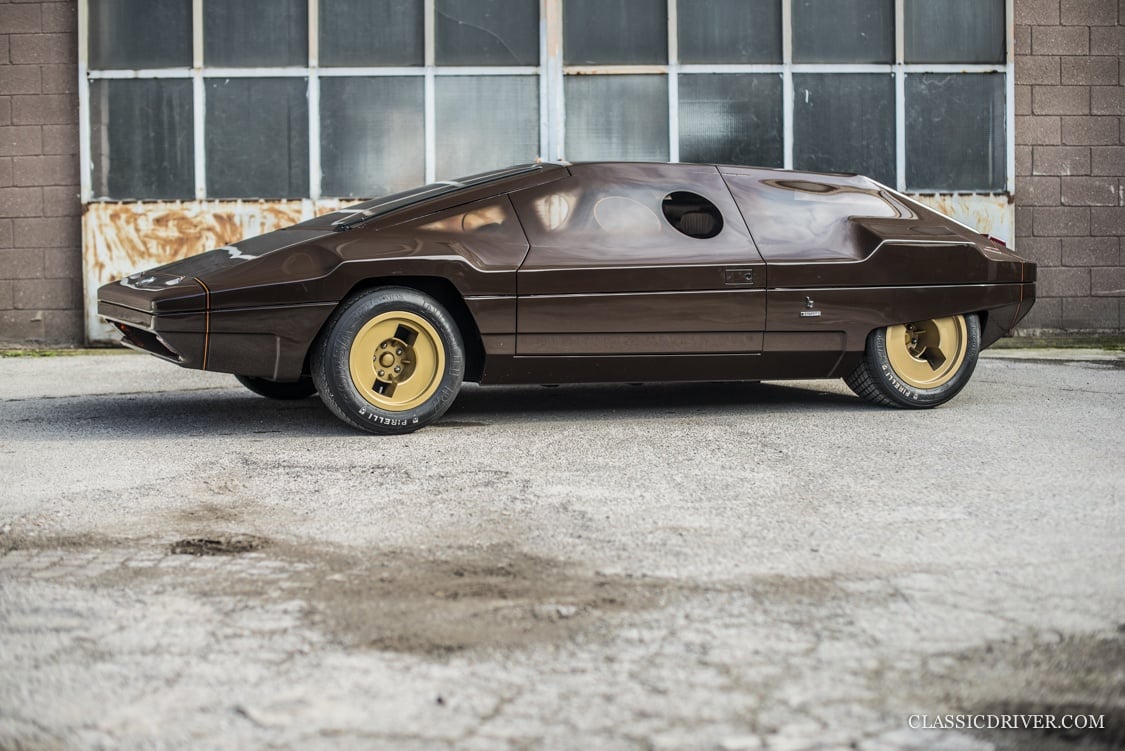

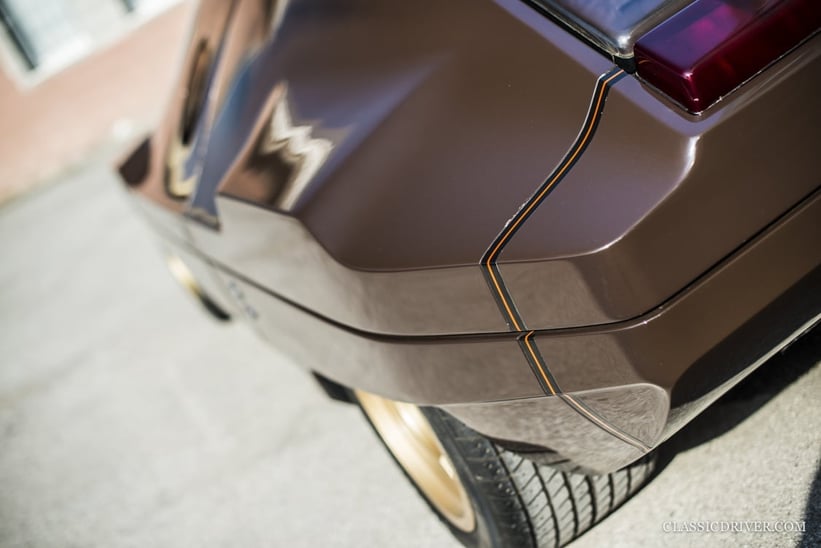
No one would suspect to see such cultural treasures in an inconspicuous backyard on the industrial outskirts of Milan. And yet the cars that architect and collector Corrado Lopresto has assembled in this most rudimentary of buildings are among the most significant in Italian automotive history. Lopresto is renowned in the classic car world for his eclectic taste and passion for particularly rare machines, and he’s repeatedly rewarded with trophies from concours competitions around the world for it. But one body stands out even among Lopresto’s automotive hall of fame — the incredible Lancia Sibilo.
The next Stratos
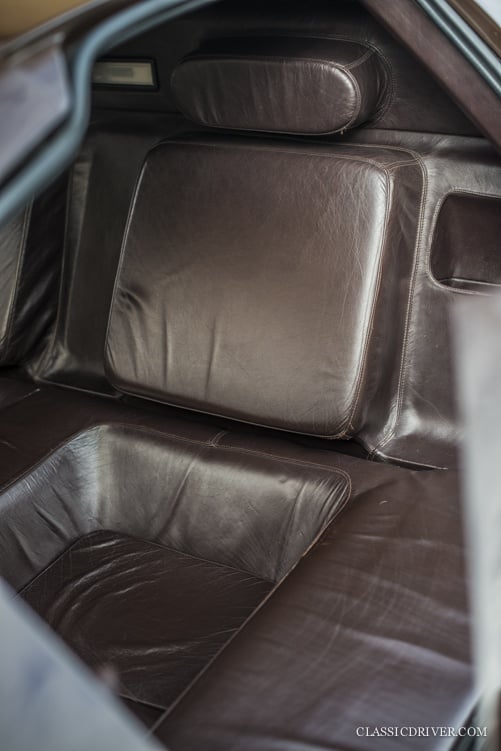
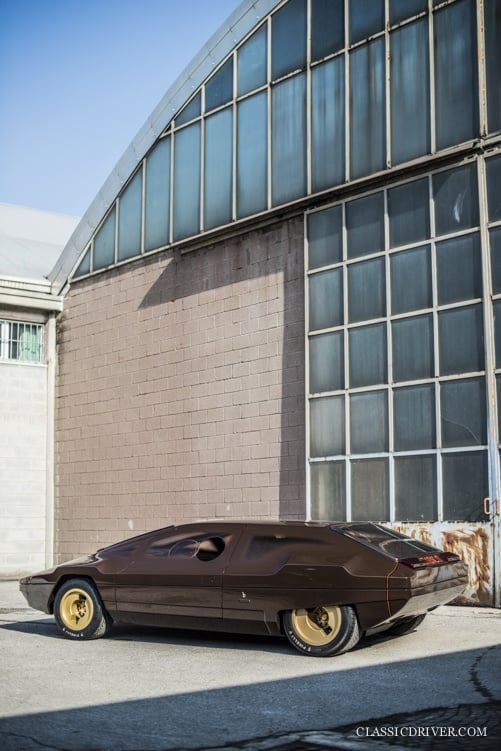
At the end of the 1970s, the Italian automotive industry was in a state of flux, thanks to the global oil crisis, which had hit the sports car manufacturers particularly hard. Ever-new safety regulations insulated creativity, and the aesthetic departure of the late 1960s — which designers such as Marcello Gandini and Giorgetto Giugiaro had initiated with their wedge-shaped sports cars — slowly lost its spirit. But life went on. As chief stylist at Bertone, Gandini was given the unenviable task of developing a successor to the Lancia Stratos. The 190hp six-cylinder, originally from the Dino ‘Ferrari’, and a lengthened Stratos chassis were used as the technical basis of the new prototype.
Straight from orbit

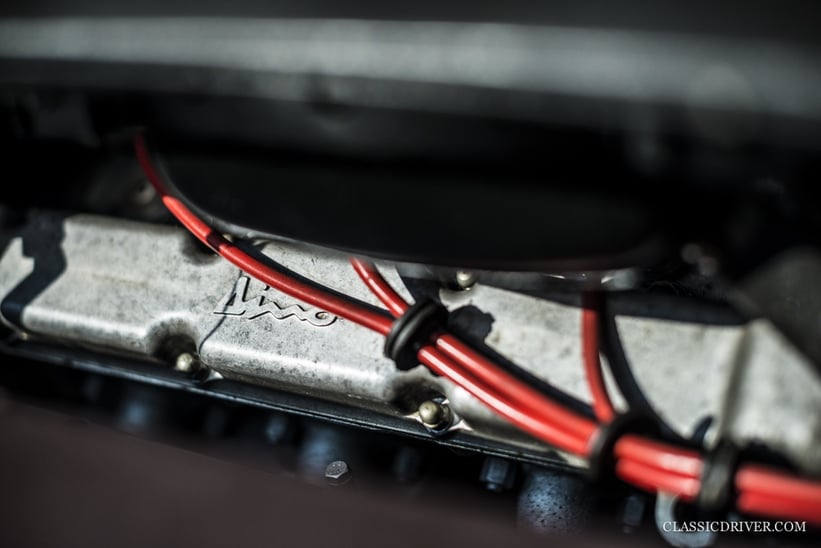
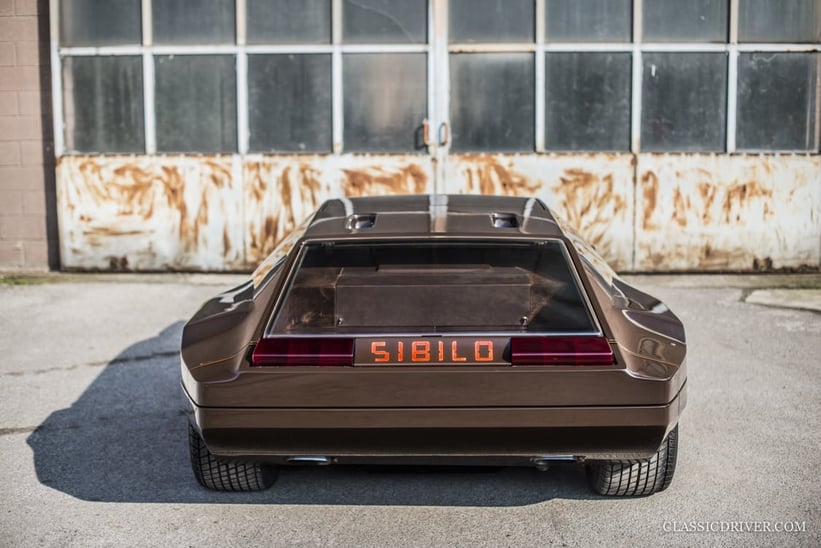
After he’d designed the Lamborghini Countach and the Lancia Stratos — both archetypes of the minimalist wedge — at the beginning of the decade, Gandini’s style had once again become more and more experimental. The 1976 Alfa Romeo Navajo was more reminiscent of a brutalist bungalow or a vehicle from a Soviet science fiction film than a road-going automobile. And with the Lancia Sibilo, which stunned visitors at the Turin Auto Show in 1978, Gandini had left the orbit of industrial suitability entirely.
A seamless piece of design
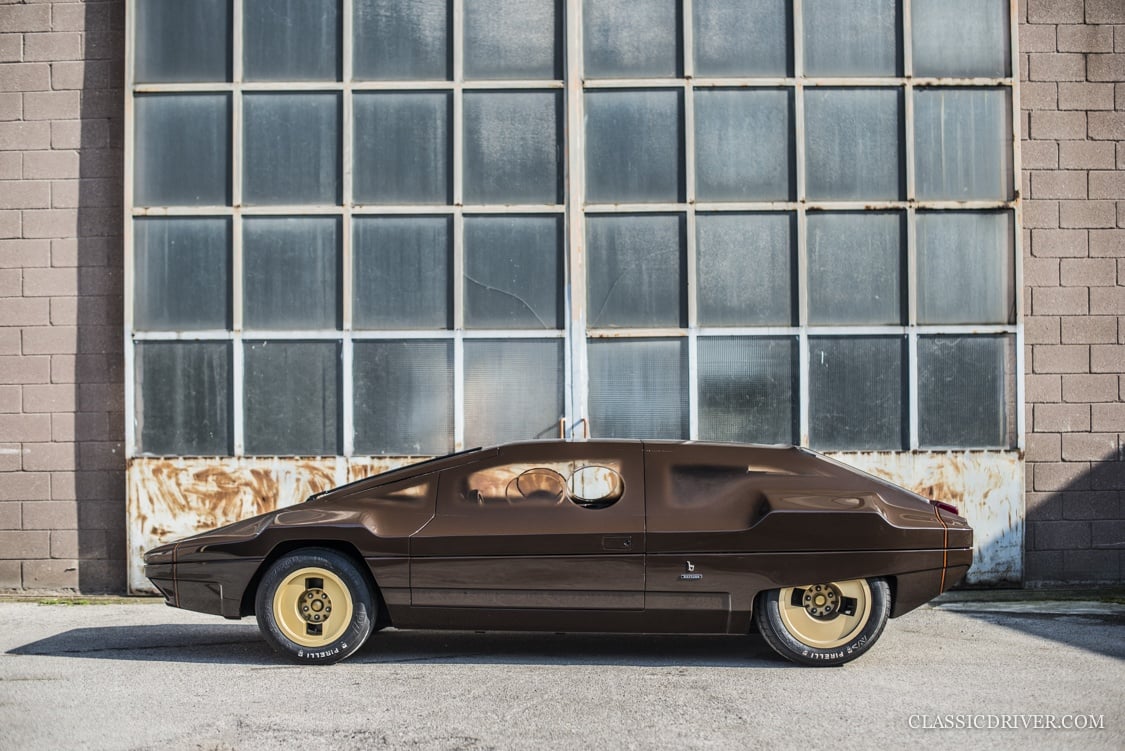
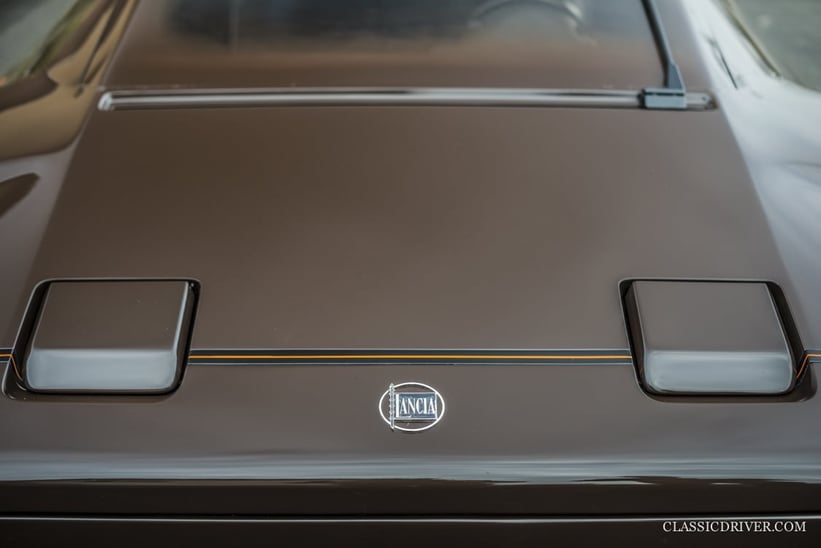
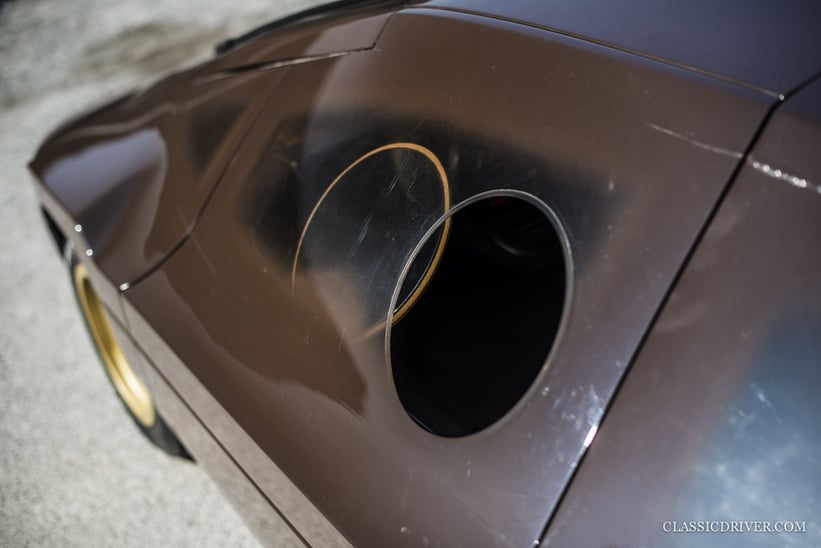
Gandini’s goal was to create the illusion of a seamless sculpture and make the handcrafted steel body appear as though it were from a cast. However, the technical resources were still quite limited and many solutions — similar to those in science-fiction films of the time — had something undeniably self-made about them. The impression that the bonnet and doors appeared to seamlessly merge with the windows was achieved with hand-sprayed colour fadings, while bright orange pinstripes marked the bumpers as independent geometrical elements. Instead of retractable windows, there were round portholes that could only be opened with a hefty pull. The golden wheels were made from wood — hardly rally friendly — and the doors were, according to the legend, made from Plexiglas, because the glass supplier failed to meet the project’s deadline.
Total Recall


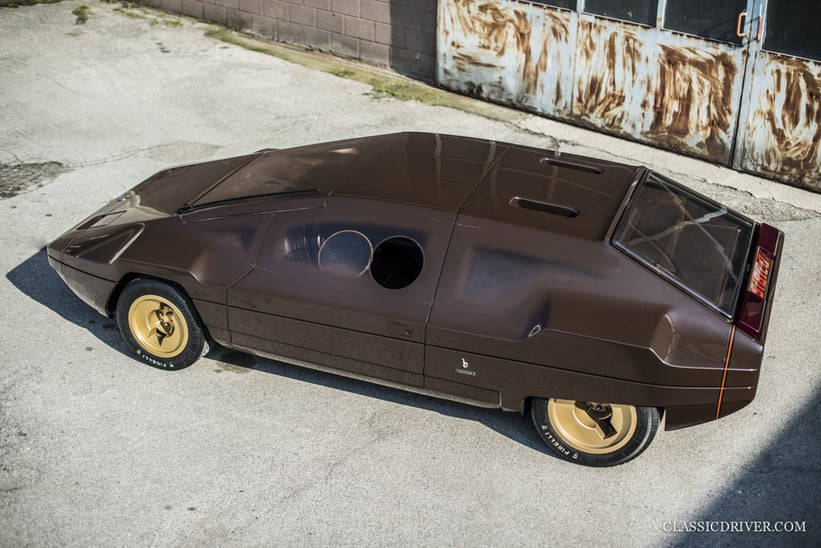
The unusual basic form — half UFO, half platypus — inspired the creators of the dystopian blockbuster Total Recall a decade later. Their standard ‘future’ cars were directly influenced by the unconstrained idea of the concept. What’s more, the chocolate brown interior, with its comfortable armchairs and early multifunctional steering wheel, is even relevant in the automotive world of tomorrow. Bertone was particularly keen on the ergonomic steering wheel, in spite of it looking like an intelligence test for toddlers.
It drives!

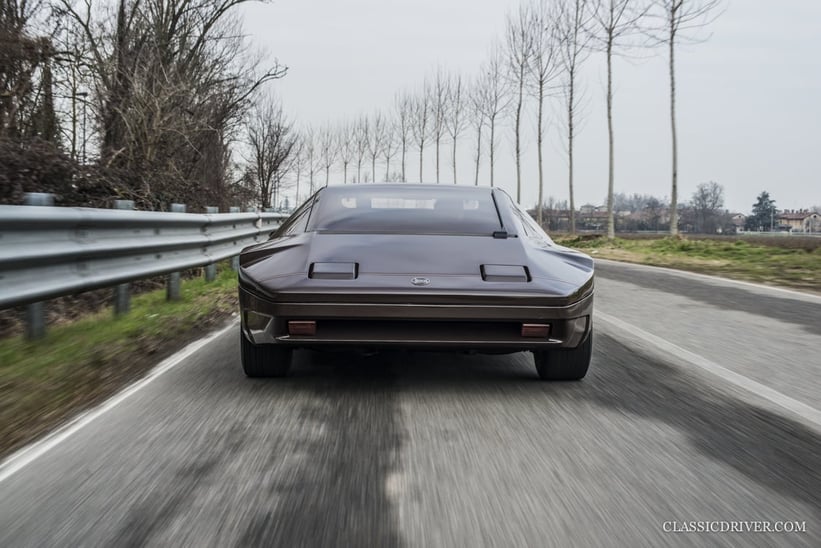
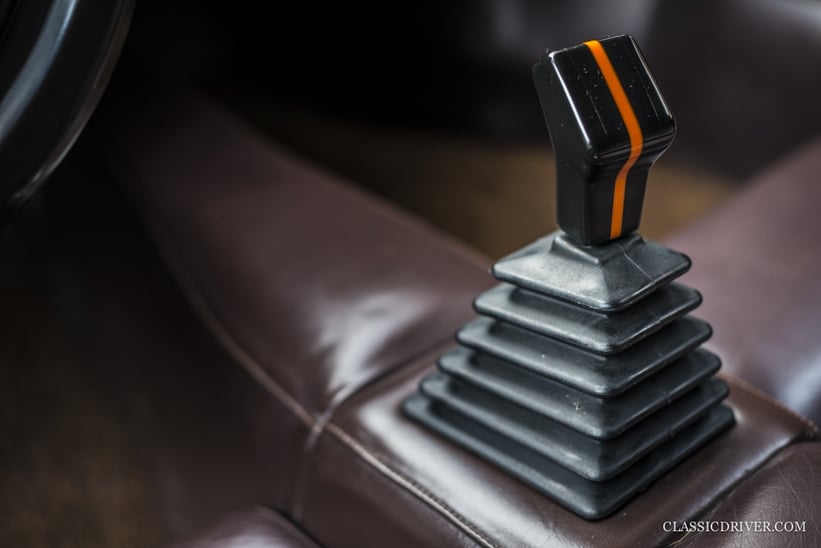
The most intriguing aspect of the Lancia Sibilo, however, was demonstrated by its owner, Corrado Lopresto — this UFO drives! In contrast with the almost anthroposophical outer-space looks of the body, the Dino V6 in the rear wakes with a very down-to-earth howl — and the futuristic joystick in the cabin is connected to a good old-fashioned five-speed gearbox. The wind whistles through the intakes in the roof directly into the Weber carburettors, and the undercarriage quite literally bounces over every bump in the road. The somewhat uncooperative disc brakes remind us that automotive technology has improved drastically since the 1970s — even if this design of the future was certainly less boring than today’s relatively non-descript cars.
Stratos meets Stratos

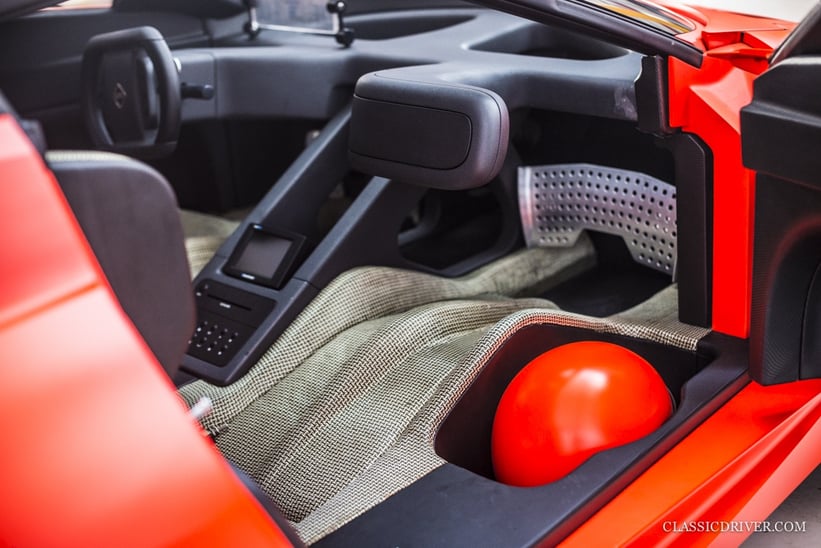
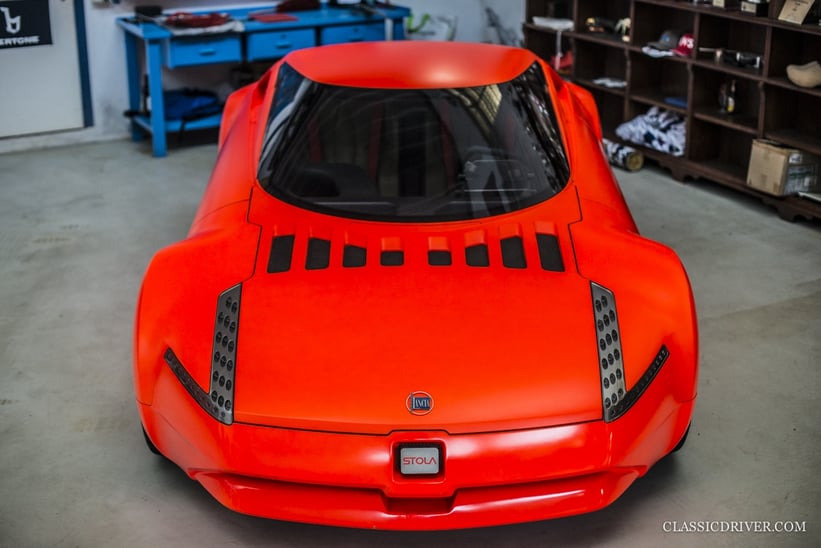
The Lancia Sibilo was not the final Stratos successor to emerge from Marcello Gandini’s mind, however. In 2001, at the Turin Auto Show, Stola design studio showed the S81 Stratos — a compact signal-red concept car with an encircling windscreen and short tail highly reminiscent of the original Stratos from 1971. The fact that both cars now reside in Lopresto’s collection provides at least a little comfort about the fact that the Stratos never received an official successor — particularly in the face of the desolate state of the once-proud brand today.
Photos: Rémi Dargegen for Classic Driver © 2017





































































